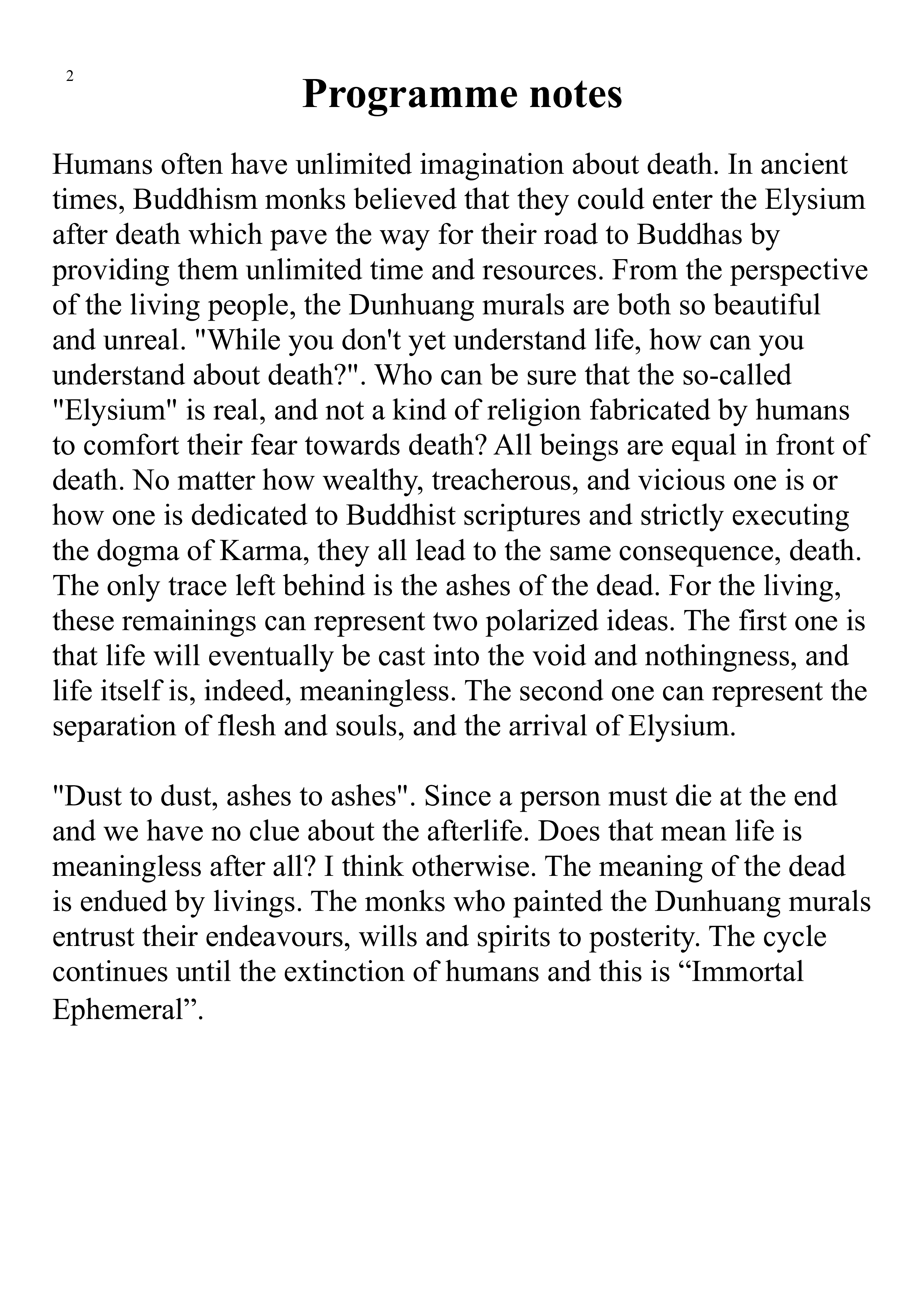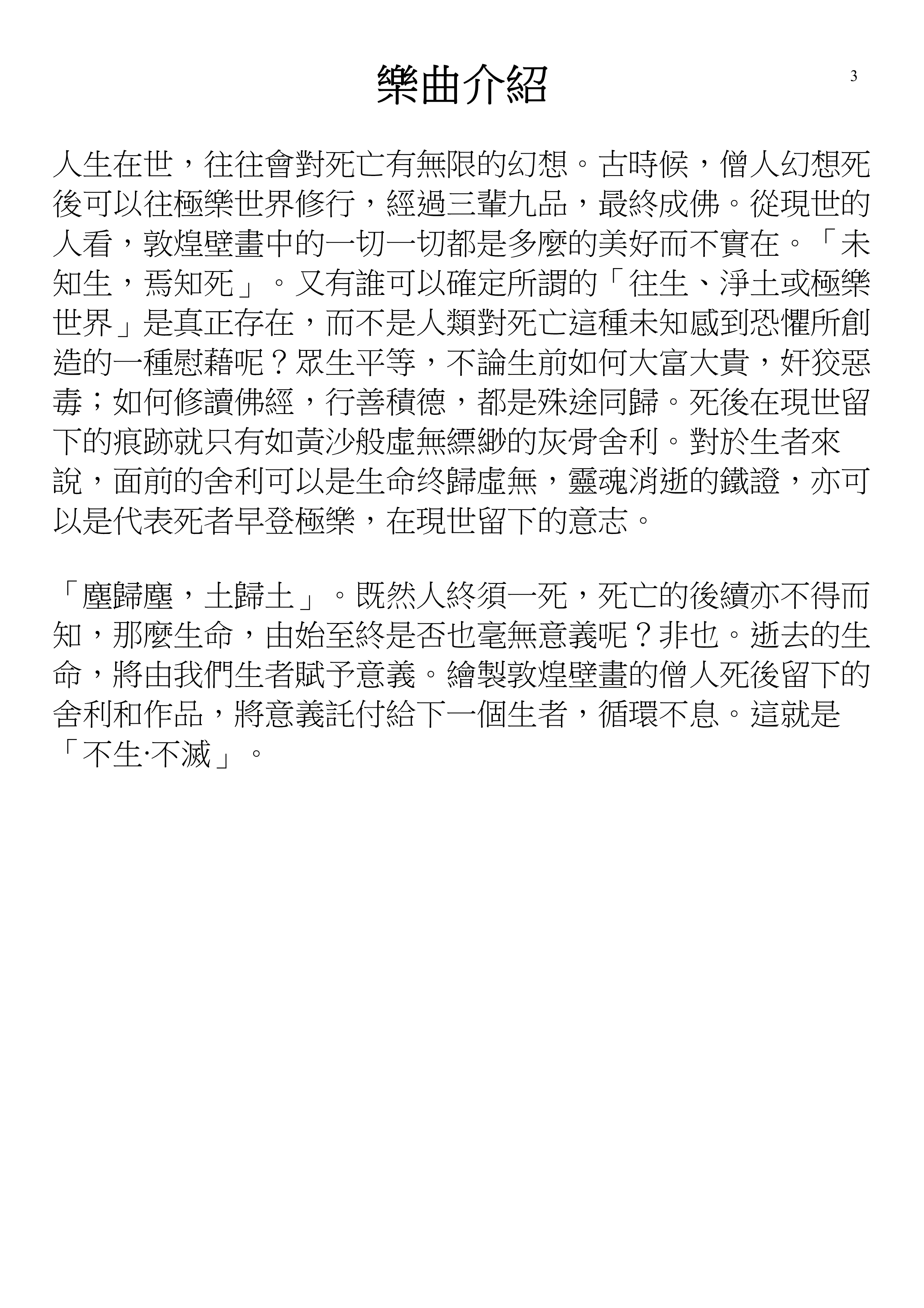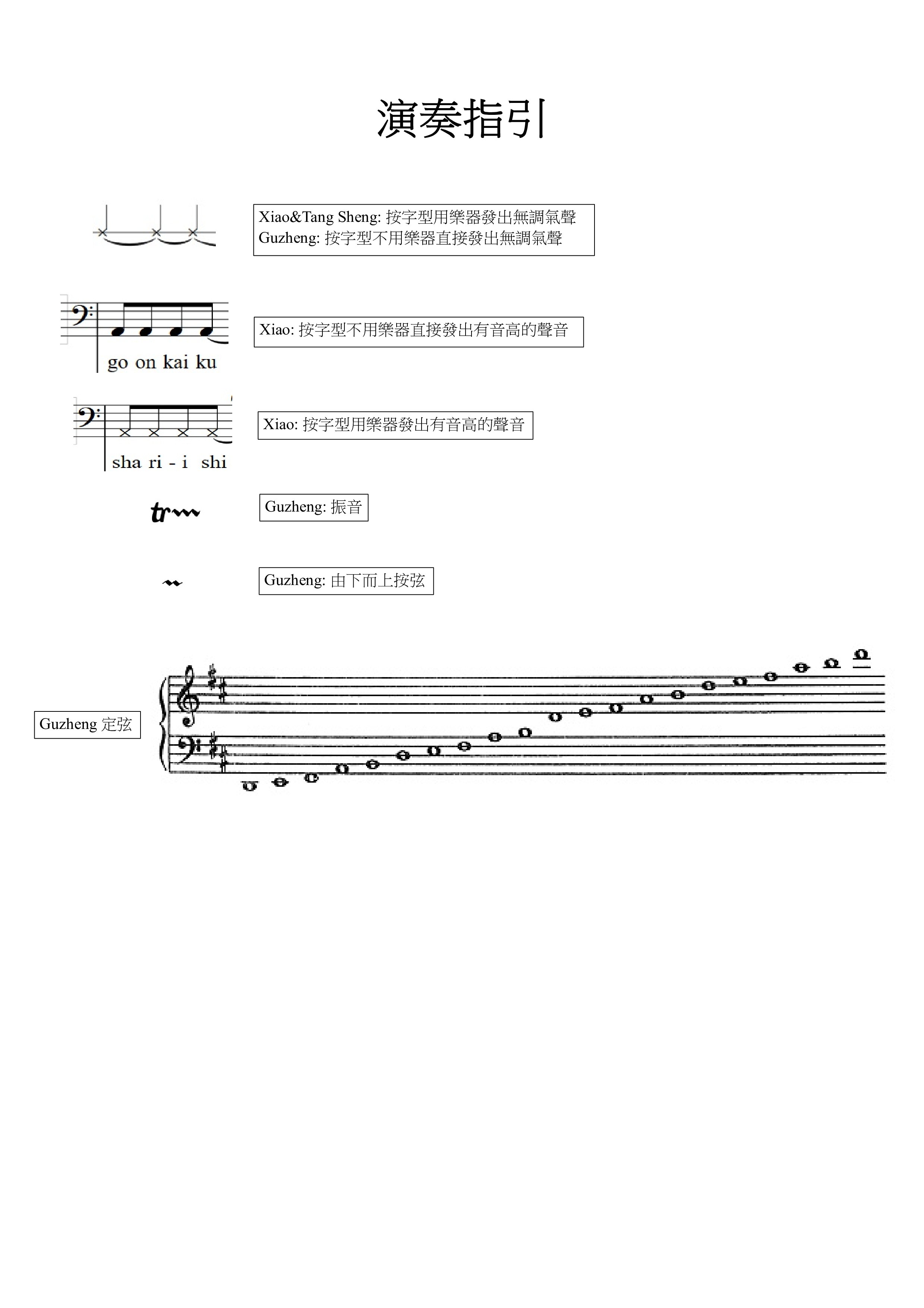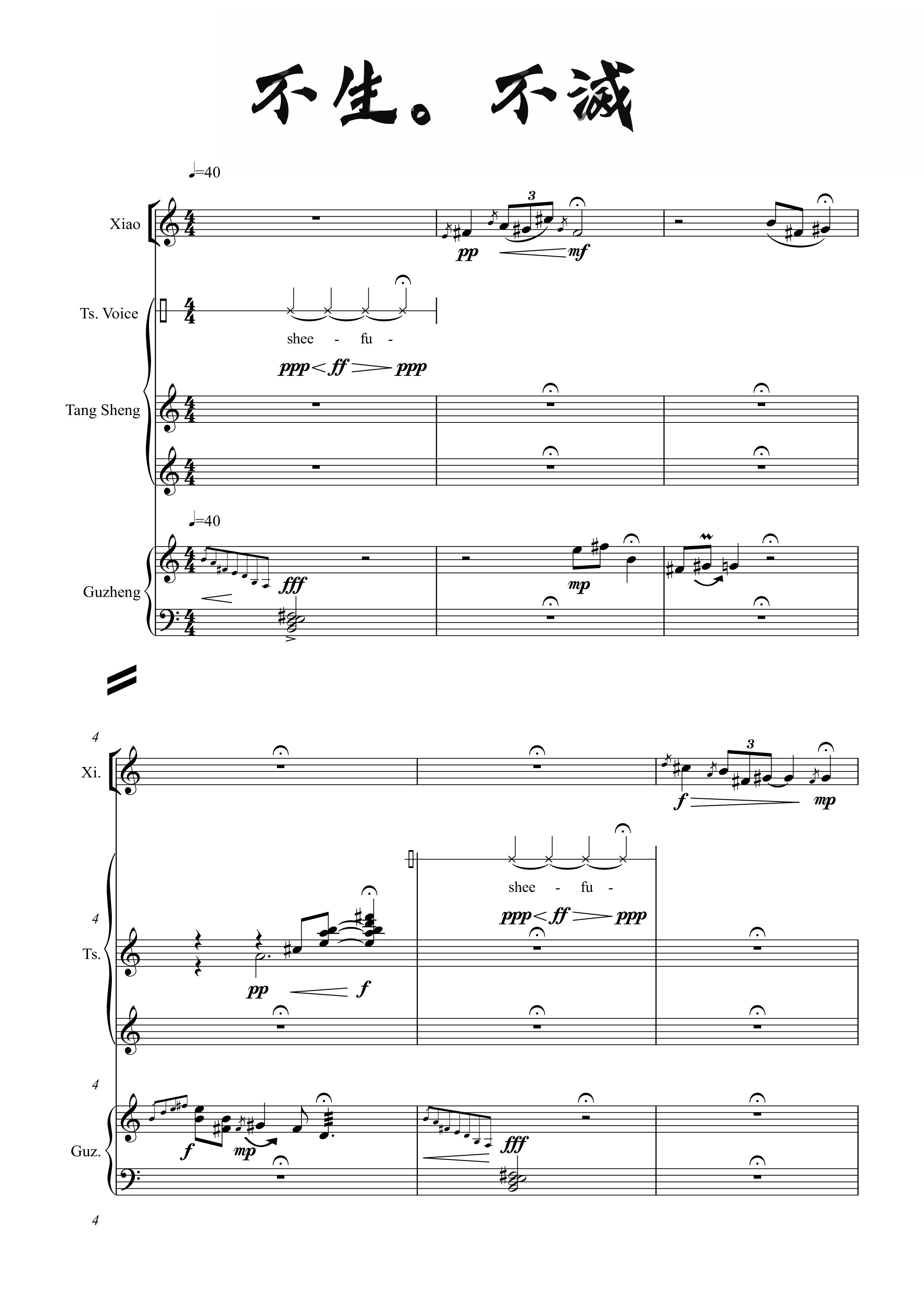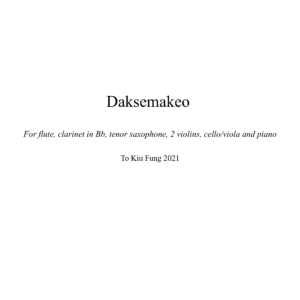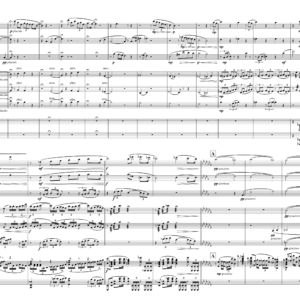不生。不滅 Immortal Ephemeral – śarīra – Full & Part scores [Digital Download]
£0.00
Composer: Martin To
- Concert video (Clickable)
- Content: Full & Part score
- Instrumentation: Xiao, Tang Sheng and Guzheng
- Format: PDF
Description
Instrumentation: Xiao, Tang Sheng and Guzheng
Humans often have unlimited imaginations about death. In ancient times, Buddhism monks believed that they could enter the Elysium after death which paved the way for their road to Buddhas by providing them unlimited time and resources. From the perspective of the living people, the Dunhuang murals are both beautiful and unreal. “While you don’t yet understand life, how can you understand about death?”. Who can be sure that the so-called “Elysium” is real, and not a kind of religion fabricated by humans to comfort their fear towards death? All beings are equal in front of
death. No matter how wealthy, treacherous, and vicious one is or how one is dedicated to Buddhist scriptures and strictly executing the dogma of Karma, they all lead to the same consequence, death.
The only trace left behind is the ashes of the dead. For the living, these remainings can represent two polarized ideas. The first one is that life will eventually be cast into the void and nothingness, and life itself is, indeed, meaningless. The second one can represent the separation of flesh and souls, and the arrival of Elysium.
“Dust to dust, ashes to ashes”. Since a person must die at the end and we have no clue about the afterlife. Does that mean life is meaningless after all? I think otherwise. The meaning of the dead
is endued by livings. The monks who painted the Dunhuang murals entrust their endeavours, wills and spirits to posterity. The cycle continues until the extinction of humans and this is “Immortal
Ephemeral”.
人生在世, 往往會對死亡有無限的幻想。 古時候, 僧人幻想死 後可以往極樂世界修行, 經過三輩九品, 最終成佛。 從現世的 人看, 敦煌壁畫中的一切一切都是多麼的美好而不實在。 「 未 知生, 焉知死」 。 又有誰可以確定所謂的「 往生、 淨土或極樂 世界」 是真正存在, 而不是人類對死亡這種未知感到恐懼所創造的一種慰藉呢? 眾生平等, 不論生前如何大富大貴, 奸狡惡毒; 如何修讀佛經, 行善積德, 都是殊途同歸。 死後在現世留下的痕跡就只有如黃沙般虛無縹緲的灰骨舍利。 對於生者來說, 面前的舍利可以是生命终歸虛無, 靈魂消逝的鐵證, 亦可以是代表死者早登極樂, 在現世留下的意志。
「 塵歸塵, 土歸土」 。 既然人終須一死, 死亡的後續亦不得而知, 那麼生命, 由始至終是否也毫無意義呢? 非也。 逝去的生命, 將由我們生者賦予意義。 繪製敦煌壁畫的僧人死後留下的舍利和作品, 將意義託付給下一個生者, 循環不息。 這就是「 不生‧不滅」 。


